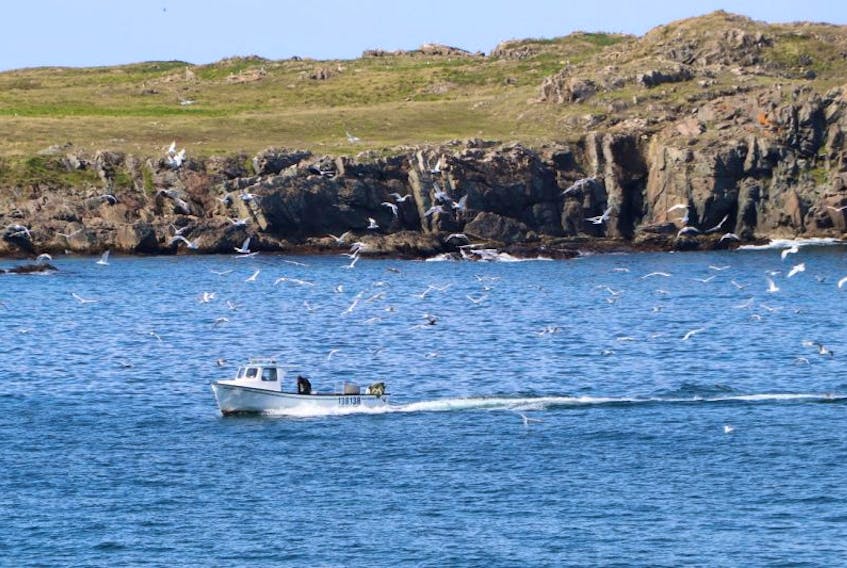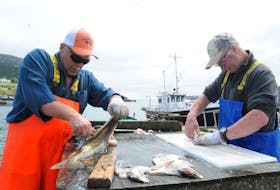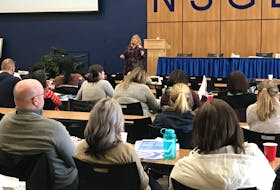
But in what seems like the blink of an eye, the province has been without a significant cod fishery now for 25 years.
Sunday, July 2, marks a quarter of a century since then federal fisheries minster John Crosbie announced what was planned to be a two-year moratorium on the northern cod fishery.
It continues on today, though it has often seemed lost in the wake of a lucrative crab and shrimp fishery that remarkably saved the industry and many communities.
But back in 1992, a province settled and built on the back of the mighty cod fishery — a renewable resource if properly taken care of — was knocked off course with the swipe of a pen.
Some fishermen tried to knock down the doors to the hotel conference room in St. John’s where the announcement was made that July 2, 1992. Other fishermen who were forced to lay down their cod traps and nets, wanted to burn their boats.
About 40,000 people were put out of work in Newfoundland and Labrador and the other Atlantic provinces combined.
The frustration echoed through the towns, outports and coves. Fishermen had been saying for years that the cod stocks had been decreasing, yet no one seemed to listen and nothing drastic was being done about it until it was too late.
Bay de Verde fisherman Tony Doyle, who is also vice-president of the FFAW-Unifor inshore fisherman’s council, remembers those days well. He said the moratorium was devastating for fisherman and plant workers alike, and for everyone — particularly in rural Newfoundland and Labrador.
He said it took awhile for the dust to settle to see how the fishery was going to be able to survive.
“It took us two or three years to start to adjust. A lot of people left the fishery,” Doyle said. “I was in my 30s then and I wanted to keep fishing. So, me and others like me, we all plugged away at it and pushed into the crab fishery and shellfish, and over the last 20 years there were ups and downs but it was a good living.”
Empty Nets: The Cod Moratorium 25 years later
Following Crosbie’s announcement, emergency assistance payments were made to active inshore fishermen, displaced fish plant workers and the crews of offshore fishing trawlers.
Income support programs followed — the Northern Cod Adjustment and Recovery Program (NCARP) and The Atlantic Groundfish Strategy (TAGS) — which included everything from options for early retirement from the fishery, fishing licence retirement, new skills training away from the fishery, professional certification of the fishery, and money for new business ideas.
The loss of that once-great fishery has been mourned, debated, had bouts of angry finger-pointing, and studied in more ways than you can shake a jigger at.
Shellfish, though allowing many to make good money — in a lot of cases more than they ever did at the cod fishery — was not as labour intensive as cod and thus there was minimum work for the plants.
In the last couple of years, a bit of shell shock has come into that fishery. The crab and shrimp stocks are declining causing a lot of worry about the future of the industry.
In turn, the northern cod stock seems to have finally taken hold again in its traditional offshore spawning areas and has started to grow — yet it is still far from being able to support any kind of major commercial fishery as seen in pre-moratorium years.
Though there’s been some continued cod fishing — such as the sentinel test fishery — small quotas for some inshore fisherman and re-opening of the cod fishery on the south and west coasts — there’s been somewhat of a gap in maintaining cod fishing skills.
Many young fisherman had moved on to other industries — such as the offshore oil and supply industries — and few have maintained their family fishing traditions.
In Doyle’s family, however, the fishing tradition is alive and well.
His son Tom started fishing with him two years before the moratorium at age nine and continues in the fishery today. Back when Tom was still in high school, he’d get up in the morning and go lobster fishing with his dad and be dropped off back at the wharf in time to go to school.
“He started off fishing with me around the same age as I was when I started fishing with Dad,” Doyle said. “He’d get up in the morning … I’d have 100 lobster pots out and we’d pull 50 and look at the watch and — sometimes, if the weather was good, I’d drop him off at the point below the house and he had to half climb up the cliff to get to the house. My wife Marie would be up and she’d have everything ready for him. He come in take a shower grab the bookbag and head to school.
“I use to say Tom b’y, that’s too much for you. And he’d say, ‘no, I wants to go out again tomorrow morning’.”
Doyle said he’s not worried about any loss of cod fishing skills should a commercial cod fishery re-open, because there’s still a lot of experienced cod fisherman around. What the concern is, he said, he ensuring fisherman land quality cod for the modern market, and to not make the same mistakes of the past.
“We are in the mode now where we are going backwards again, from shellfish to cod, and there’s a transition we have to go through and we haven’t got to learn how to catch fish, but we got to learn how to catch it in a different way, to make sure we land the top quality fish,” he said. “And the people who came into the fishery since cod moratorium, they are going to get a rude awakening in a sense because you are not going to get the same dollars, the same value for cod fish as for shellfish.
“Years ago, we caught thousands of pounds of cod for 25 cents a pound. I don’t want to go back to that. I don’t want to catch a quarter of a million pounds of fish for 20 cents a pound, I want to catch 50,000 or 60,000 pounds for a $1.50 a pound. That’s where I’m to, less fish and better quality for more money. And the industry is in the process of trying to do that.”









